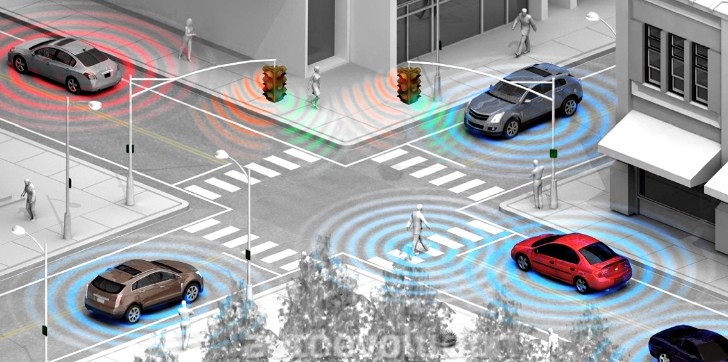Safety and the shift towards electricity seem to be the big technical topics of the moment in the industry, and after doing a good job with Cadillac’s ‘Super Cruise’ system, GM are still at it. Now, however, they will be focusing on pedestrian and bicyclist avoidance, instead of other cars.
The basis for the new system is Wireless Direct, “the peer-to-peer wireless standard that allows devices like some smartphones to communicate directly with each other rather than through a shared access point like a cell phone tower.”
This system will alert the driver of a pedestrian or biker up ahead, even before the driver is able to see for him or herself. GM also plans to integrate the system into a smartphone app which will identify and detect road users wirelessly, not relying only on sensors and cameras to spot them.
"This new wireless capability could warn drivers about pedestrians who might be stepping into the roadway from behind a parked vehicle, or bicyclists who are riding in the car's blind spot [. . .] Wi-Fi Direct has the potential to become an integral part of the comprehensive driver assistance systems we offer on many of our Chevrolet, Cadillac, Buick and GMC vehicles," said Nady Boules, GM Global R&D director of the Electrical and Control Systems Research Lab.
The technology is still being developed, and it has been split into two categories: vehicle-to-infrastructure (V2I) and vehicle-to-vehicle (V2V) - both of which are self explanatory. The system also does away with the need for a cell tower nearby, as two cars can connect to one another wirelessly regardless of whether or not they are within range of a tower or not.
According to Thilo Koslowski, VP of automotive industry analysis at Gartner Inc. "As we move toward becoming a more connected society, having a self-aware connected car will be increasingly important [. . .] Not only can Wi-Fi Direct help vehicles seamlessly communicate with other consumer devices, it can also augment vehicle-to-infrastructure communications as well, which could lead to better traffic management and fewer accidents."
This system will alert the driver of a pedestrian or biker up ahead, even before the driver is able to see for him or herself. GM also plans to integrate the system into a smartphone app which will identify and detect road users wirelessly, not relying only on sensors and cameras to spot them.
"This new wireless capability could warn drivers about pedestrians who might be stepping into the roadway from behind a parked vehicle, or bicyclists who are riding in the car's blind spot [. . .] Wi-Fi Direct has the potential to become an integral part of the comprehensive driver assistance systems we offer on many of our Chevrolet, Cadillac, Buick and GMC vehicles," said Nady Boules, GM Global R&D director of the Electrical and Control Systems Research Lab.
The technology is still being developed, and it has been split into two categories: vehicle-to-infrastructure (V2I) and vehicle-to-vehicle (V2V) - both of which are self explanatory. The system also does away with the need for a cell tower nearby, as two cars can connect to one another wirelessly regardless of whether or not they are within range of a tower or not.
According to Thilo Koslowski, VP of automotive industry analysis at Gartner Inc. "As we move toward becoming a more connected society, having a self-aware connected car will be increasingly important [. . .] Not only can Wi-Fi Direct help vehicles seamlessly communicate with other consumer devices, it can also augment vehicle-to-infrastructure communications as well, which could lead to better traffic management and fewer accidents."
